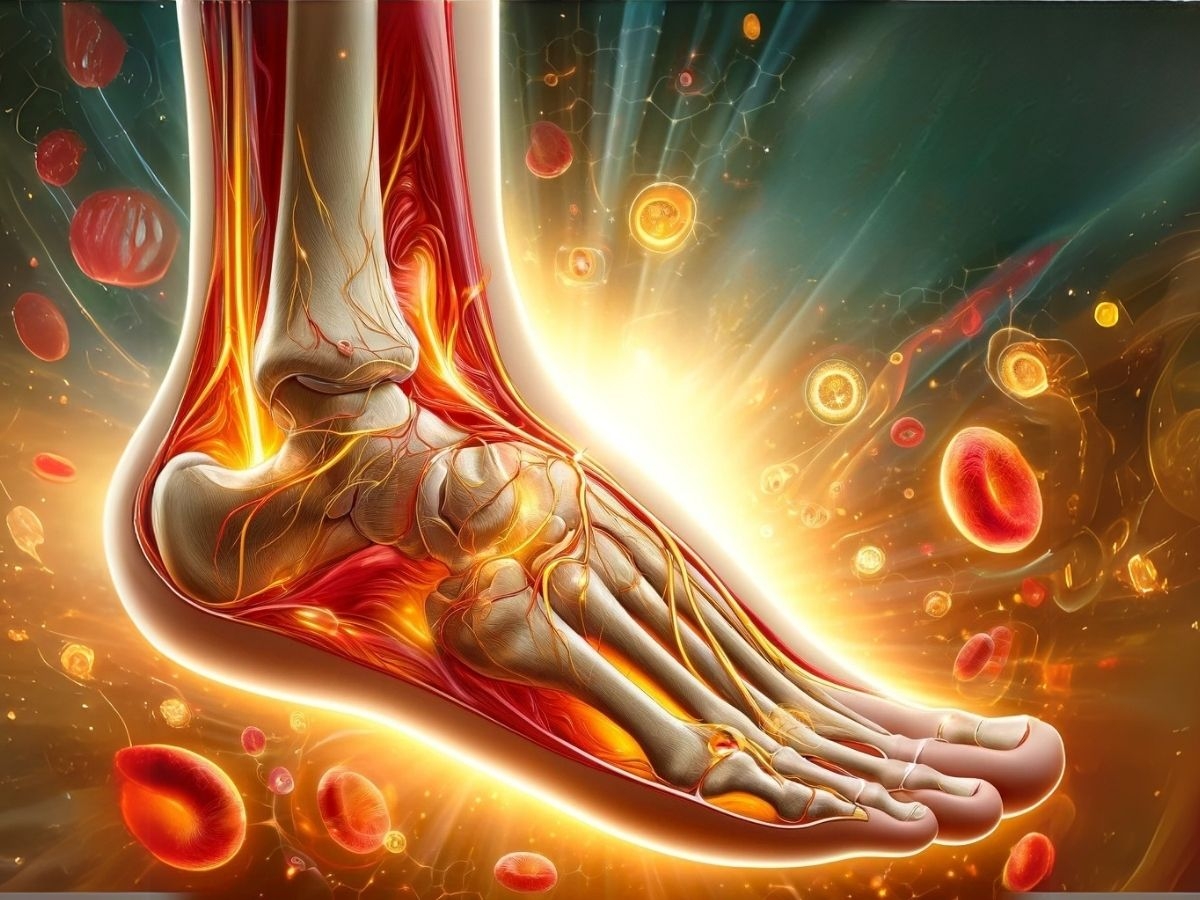PRP Therapy for Diabetic Foot Ulcers: A Breakthrough in Healing
April 24 2025


Transforming Diabetic Wound Care with Platelet-Rich Plasma
Diabetic foot ulcers are among the most severe and common complications of diabetes, affecting nearly 1 in 4 diabetic individuals during their lifetime. Alarmingly, 20% of these cases can lead to lower-limb amputation if not managed effectively and in time.1 The need for a reliable, regenerative treatment has never been greater—and that’s where Platelet-Rich Plasma (PRP) therapy is making a game-changing impact.
What is PRP and How Does It Work?
PRP (Platelet-Rich Plasma) is an autologous therapy derived from a patient’s own blood, enriched with a high concentration of platelets. These platelets contain growth factors that stimulate angiogenesis (new blood vessel formation), cell regeneration, and extracellular matrix remodeling—all critical for effective wound healing. PRP addresses the core dysfunctions in diabetic wound healing: poor circulation, slow tissue regeneration, and chronic inflammation.
Patients treated with PRP are 4x more likely to experience full wound closure compared to conventional treatments.
Clinical Evidence and Results
Multiple randomized clinical trials and meta-analyses have confirmed PRP’s superior efficacy in treating diabetic foot ulcers:
- 80% wound reduction observed in PRP-treated patients vs. 46% with standard dressings.3
- Wounds healed on average 3 weeks faster, minimizing pain, hospital visits, and healthcare costs.2
- Up to 74% of patients experienced complete healing within 30 days.4
- Minimal to zero side effects, even with repeated applications or injections.4
Ideal Use Cases: When to Choose PRP
PRP is especially effective for:
- Small to medium-sized chronic ulcers
- Neuropathic, ischemic, or neuro-ischemic diabetic foot types
- Patients with delayed healing due to poor blood circulation or nerve damage
- Non-healing wounds in elderly diabetic individuals
For larger or deeper wounds, PRP is best used in combination with fat grafts, skin grafts, stem cells, or vacuum therapy for enhanced recovery.
Why PRP Outperforms Traditional Treatments
Traditional dressings and antibiotics may protect the wound but do little to actively stimulate regeneration. PRP, by contrast, delivers targeted biological healing where it’s needed most:
- Stimulates angiogenesis to restore blood supply
- Enhances collagen production and tissue structure
- Promotes cell proliferation to close wounds faster
Fast Fact: A single PRP injection has shown over 90% wound size reduction within 4 weeks in some patients
The Role of PRP in Non-Healing Wounds
In diabetic patients, non-healing wounds (NHWs) are increasingly common, with diabetes responsible for nearly 31% of chronic wound cases.5 Delayed diagnosis and treatment are leading causes of non-healing wound progression, often ending in amputation. PRP offers a vital early intervention to halt this progression, especially in the elderly diabetic population with compromised immunity.
The ALIV Advantage: Personalized, Proven, Preventative
At ALIV Regenerative Wellness, our PRP protocol is designed to be:
- Patient-specific, using your own blood for safe, natural healing
- Scientifically backed, based on global clinical research and tailored protocols
Complementary, working alongside fat grafts, stem cell therapy, and vacuum dressing if needed
Don’t Wait for the Wound to Worsen
Diabetic foot ulcers don’t just affect the skin—they threaten mobility, independence, and quality of life. PRP therapy is a powerful, minimally invasive option that accelerates healing and helps prevent life-altering complications like infection and amputation. If you or a loved one is dealing with a slow-healing diabetic wound, it’s time to step into the future of regenerative care.
Explore PRP therapy at ALIV today—because healing should never wait.
Resources:
Burgess JL, Wyant WA, Abdo Abujamra B, Kirsner RS, Jozic I. Diabetic Wound-Healing Science. Medicina. 2021; 57(10):1072. https://doi.org/10.3390/medicina57101072
OuYang Hong , Tang Yi , Yang Fan , Ren Xin , Yang Jing , Cao Hongyi , Yin Yifan. Platelet-rich plasma for the treatment of diabetic foot ulcer: a systematic review, Frontiers in Endocrinology. Volume 14 - 2023. URL=https://www.frontiersin.org/journals/endocrinology/articles/10.3389/fendo.2023.1256081
Fara Syafira, Muhammad Baharul Iman, Pariyana, Rita Sriwulandari, Platelet-rich plasma (PRP) as therapy for diabetic foot ulcer (DFU): A systematic review and meta-analysis of the latest randomized controlled trials, Diabetes Epidemiology and Management, Volume 13, 2024. https://doi.org/10.1016/j.deman.2023.100178. Suthar, M., Gupta, S., Bukhari, S. et al. Treatment of chronic non-healing ulcers using autologous platelet rich plasma: a case series. J Biomed Sci 24, 16 (2017). https://doi.org/10.1186/s12929-017-0324-1.
Sakaria, A. D., & Alva , B. V. (2023). Platelet rich plasma: a novel therapy in chronic wounds. International Surgery Journal, 10(8), 1295–1298. https://doi.org/10.18203/2349-2902.isj20232323
Wolny D, Štěpánek L, Horáková D, Thomas J, Zapletalová J, Patel MS. Risk Factors for Non-Healing Wounds—A Single-Centre Study. Journal of Clinical Medicine. 2024; 13(4):1003. https://doi.org/10.3390/jcm13041003